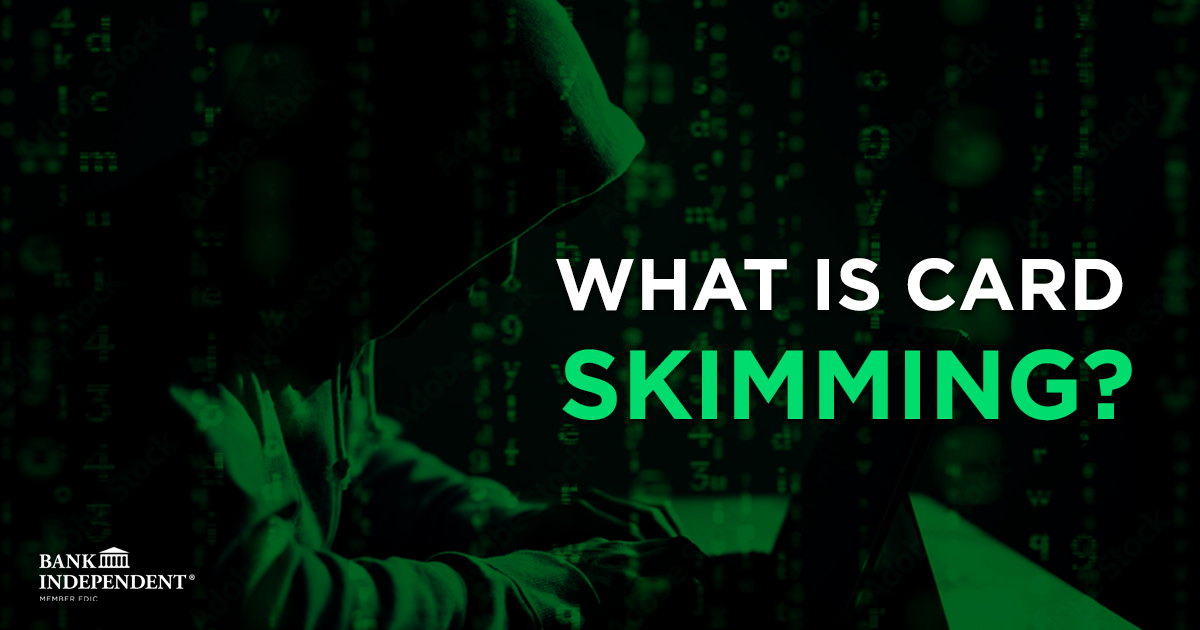
You're probably familiar with card skimming as a consumer. You go to use your debit or credit card and are informed by your bank that someone has stolen your card number and is now making purchases.
What Is Card Skimming and How Does It Work?
Unfortunately, card skimming is a common scam that's been on the rise in recent years. In a nutshell, card skimming is a type of theft in which criminals steal your credit or debit card information by capturing it electronically.
This can be done in a number of ways, but the most common is when criminals attach a device to an ATM or credit card reader that captures your card information as you're using it. They may also "swipe" your card through a handheld device to get the same results.
So how can you protect yourself from this? Well, it's important to be aware of what to look for so that you can identify any suspicious devices or activity. Be cautious when using ATMs and credit card readers, and always use the security features that are available to you, like chip cards, PINs and contactless.
The Common Types of Card Skimming
When you go to pay with your debit or credit card, you probably don't give much thought to the process. You slide your card, enter your PIN and voila, your purchase is complete.
But what if someone was watching you do that? What if they could get their hands on your card and use it to make fraudulent purchases? That's where card skimming comes in. This is a technique that criminals use to steal your card information.
There are a few different ways that criminals can do this. The most common type of card skimming is where they install a device on an ATM or point-of-sale terminal that reads your card information. This information is then copied and used to create fake cards.
Another common type of card skimming is when criminals attach a camera to an ATM or point-of-sale terminal. This camera records your PIN as you enter it, which allows them to access your account and make fraudulent transactions.
So, what can you do to protect yourself from card skimming? There are a few things:
Be aware of your surroundings when you're making a purchase. If something looks suspicious, don't use the machine.
Be careful when you're typing in your PIN. If someone is standing too close to you, cancel the transaction and find another machine.
Regularly check your bank statements for any unauthorized transactions.
Signs of a Potential Card Skimming Scam
Spotting a card skimming scam can be tricky, but there are some telltale signs that you can look out for. Keep an eye out for people who seem to be working a little too hard to get your attention, or for devices that seem to be out of place.
For example, if you're in a store and you see someone hanging around the ATM machine, that's definitely a red flag. Similarly, if you notice a strange device attached to the card reader, or if the keypad seems to be loose, those are also warning signs.
If you're ever in doubt, it's always best to err on the side of caution and not use the ATM or credit card machine. Instead, go to the store clerk and ask to pay with cash. That way, you can avoid any potential problems and keep your finances safe and secure.
Steps Consumers Should Take to Protect Themselves
So now that you know a little bit more about how card skimming works and what to look for, what can you do to protect yourself?
Here are a few things you can do:
- Check your bank and credit card statements regularly. If you see any suspicious charges, report them to your bank or credit card company immediately.
- When using an ATM, be sure to use one that is in a well-lit, busy area. Avoid using an ATM that looks like it has been tampered with.
- Be aware of your surroundings when using your credit or debit card. If you feel like you are being followed or watched, go to a busy, public place, and ask for help.
What Banks Are Doing to Prevent Card Skimming Scams
Bank Independent is always working on new ways to prevent card skimming scams and to protect you from falling victim to a scam. However, there are a few things you can do to protect yourself in the meantime.
One thing you can do is to check your bank statements regularly. This way, you can catch any unauthorized charges quickly and report them to your bank.
You should also be careful about where you use your credit or debit card. Use caution at ATMs or gas stations, as these are common places for card skimming scams to occur. Make sure to check the machine for signs of tampering before you use it.
Finally, keep an eye on your credit score. A sudden drop in your credit score could be a sign that your information has been compromised in a card skimming scam. So, if you see a sudden drop, be sure to check your credit report for any suspicious activity.
What can you do to protect yourself from card skimming? Well, there are a few simple things:
- Be aware of your surroundings when you're using your credit or debit card. If something seems suspicious, cancel your transaction, and report it to the bank.
- Make sure you're using a secure ATM. Look for the padlock icon in the browser window, and make sure the ATM is in a well-lit area.
- Keep an eye on your account activity. If you see any unauthorized charges, report them to the bank immediately.
- Make sure you use a card with Chip Technology or Contactless. All Bank Independent Debit Cards include secure EMV or "chip" technology. A Contactless Card provides secure encryption technology and is as secure as your regular card.
Learn more about Bank Independent debit card options at https://www.bibank.com/personal/bank/debit-cards

